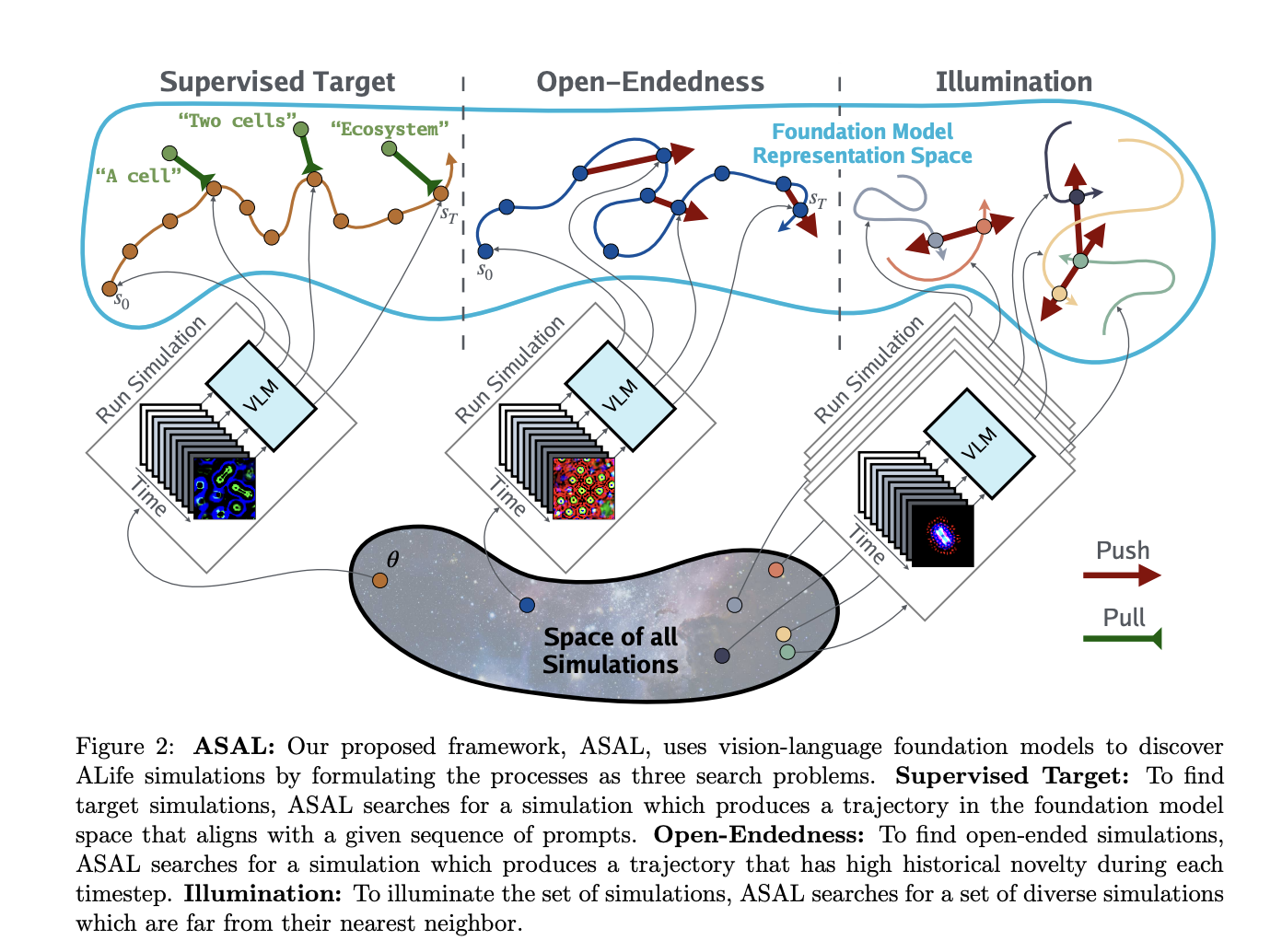
Understanding Artificial Life Research
Artificial Life (ALife) research studies lifelike behaviors through computer simulations. This helps us understand “life as it could be.” However, the field has challenges, such as:
- Manual Simulation Rules: Creating simulations takes a lot of time and relies on human intuition, which can limit discoveries.
- Trial and Error: Researchers often use trial and error to find configurations that lead to interesting behaviors, slowing down progress.
- Evaluation Difficulties: Current metrics do not fully capture what makes phenomena interesting or lifelike.
Introducing ASAL: A Solution for ALife Research
To overcome these challenges, researchers from MIT, Sakana AI, OpenAI, and The Swiss AI Lab IDSIA developed the Automated Search for Artificial Life (ASAL). This algorithm automates the discovery of artificial lifeforms, allowing researchers to:
- Define Simulation Space: Instead of crafting every rule, researchers can set the simulation parameters, and ASAL will explore them.
- Utilize Vision-Language Models: ASAL uses advanced models to align visual outputs with text, making evaluations more intuitive.
How ASAL Works
ASAL operates through three main mechanisms:
- Supervised Target Search: Finds simulations that produce specific outcomes.
- Open-Endedness Search: Discovers new and sustained patterns in simulations.
- Illumination Search: Maps various simulations to reveal potential lifeforms.
Benefits of ASAL
ASAL offers several advantages:
- Efficient Exploration: Automating the search saves time and resources.
- Wide Applicability: Works with various ALife systems like Lenia and Boids.
- Enhanced Metrics: Bridges the gap between human judgment and computational evaluation.
- Open-Ended Discovery: Excels at finding new patterns central to ALife research.
Key Results from ASAL
ASAL has shown effectiveness in various experiments:
- Supervised Target Search: Discovered simulations for “self-replicating molecules” and “neuron networks.”
- Open-Endedness Search: Found rules in cellular automata that exceeded the capabilities of Conway’s Game of Life.
- Illumination Search: Mapped unique behaviors in Lenia and Boids, revealing new patterns.
Conclusion
ASAL is a major advancement in ALife research, providing systematic solutions to longstanding challenges. By automating discovery and using human-aligned metrics, ASAL is a valuable tool for exploring lifelike behaviors.
Future applications of ASAL may extend beyond ALife, potentially impacting fields like physics and material science. It allows researchers to explore hypothetical worlds and understand life’s origins better.
Get Involved
For more insights, check out the Paper and GitHub Page. Follow us on Twitter, join our Telegram Channel, and connect with our LinkedIn Group. Don’t forget to join our 60k+ ML SubReddit.
Transform Your Business with AI
Stay competitive by leveraging AI solutions like ASAL. Here’s how:
- Identify Automation Opportunities: Find customer interaction points that can benefit from AI.
- Define KPIs: Ensure measurable impacts on business outcomes.
- Select an AI Solution: Choose tools that fit your needs and allow customization.
- Implement Gradually: Start with a pilot project, gather data, and expand wisely.
For AI KPI management advice, contact us at hello@itinai.com. For continuous insights, follow us on Telegram or Twitter.
Discover how AI can enhance your sales processes and customer engagement at itinai.com.



























